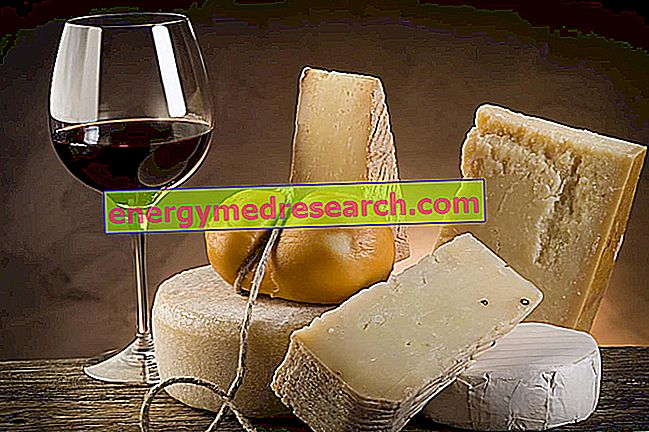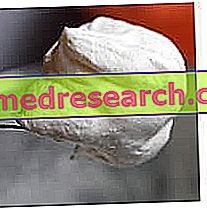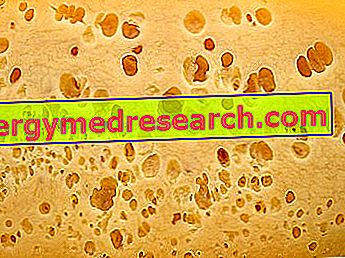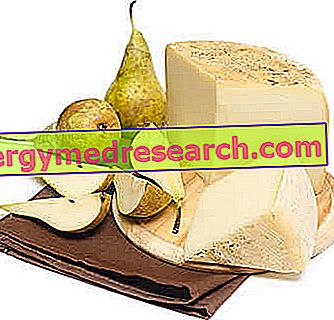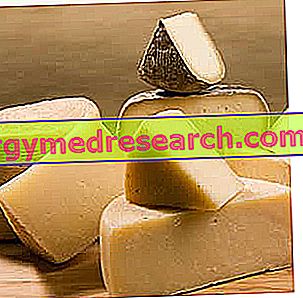Cheese syndrome ( Cheese syndrome ) is a form of food poisoning due to the ingestion of biogenic amines. In particular, tyramine is the cause of the cheese syndrome, a molecule deriving from the decarboxylation of the amino acid tyrosine by some bacteria. The concentrations of tyramine are high in fermented and seasoned cheeses, but also in many other foods, such as preserved meats (canned, stuffed, marinated, smoked and fermented), preserved fish (smoked, marinated, etc
Category milk and derivatives
Generality Gorgonzola is a PDO cheese (Protected Designation of Origin), which takes its name from the homonymous Lombard city of origin (precisely Gorgonzola, in the province of Milan); it comes in cylindrical forms of about 6-13kg, with a rough and reddish crust with a partially pigmented viscous patina
What is the Murazzano? Murazzano is a typical Italian cheese, of Piedmontese origin, which since December 16th 1996 has received the European DOP (Protected Designation of Origin) recognition. Murazzano takes its name from the town of the same name located in the province of Cuneo which, however, represents only a small part of the territory dedicated to its production
Generality Fresh cream is a food very rich in lipids (around 35%), obtained from cow's milk. It represents one of the three types of "cream of milk" (animal) marketed in Italy; the other two are coffee cream and cooking cream. Being pasteurized, compared to the kitchen equivalent, fresh cream CANNOT be stored for a long time and has a limited shelf-life (of a few days)
Generality and production The whipped cream is a foamy and soft mass, relatively stable, obtained by mechanical stirring of the liquid cream. The cream intended for assembly must have some specific chemical-physical "requirements": lipid content between 30 and 40%, integrity of the fat micelles, relatively low sanitation temperature (pasteurization), low storage temperature but not too much, close to 0 ° C (more or less "from the fridge"), acid pH NEVER and no industrial processing such as homogenization and UHT; mechanical agitation and "nature" (as they say) will
Generality Cooking cream is a derivative of fat-rich milk. It represents one of the three types of "cream of milk" available on the market and, unlike the "fresh" one, has a decidedly greater shelf life. Even the cream from the kitchen (like the others) is obtained by re-incorporating the fats (organized in globules) of the milk which tend to separate by spontaneous surfacing, by industrial centrifugation or following the processing of the whey
Generality Parmesan cheese is a seasoned cheese typical of northern Italy, more precisely in the Po valley (an area between central-western Emilia and Mantua). It is a dairy product derived from the processing of partially skimmed cow's milk; as such, Parmesan cheese boasts rather good nutritional characteristics: compared to most aged cheeses, Parmesan cheese is less fat, more protein, contains less lactose and provides an excellent concentration of calcium; the amount of sodium is still considerable, as is that of cholesterol
What's this What is pannerone? Pannerone or panerone is a typical Italian uncooked cheese, made exclusively with whole raw cow's milk. Characteristic of the Lombardy region, more precisely of the lower Milan, of the province of Lodi and Cremona, this dairy product enjoys the recognition of Traditional Agri-food Product (PAT)
What is pecorino romano Pecorino Romano is the name of an Italian cheese with a hard and cooked paste, produced from whole fresh sheep's milk, and awarded - since 1996 - the DOP recognition (Protected Designation of Origin). It has a fairly high caloric intake and, being part of the II fundamental group of foods, is an excellent source of proteins with high biological value, mineral salts and specific vitamins of milk and derivatives
Generality Pecorino is a cheese made from sheep's milk; it is, in particular, a sheep's cheese with a hard paste, since its humidity is less than 40%. Pecorino could be defined as a typical Italian food, since the European Community has recognized and certified as many as 5 varieties of pecorino DOP (Protected Designation of Origin), respectively: pecorino romano , pecorino sardo , pecorino toscano , pecorino siciliano and pecorino filiano
What is Sardinian pecorino? Sardinian pecorino is an Italian cheese, typical of the Sardinia region. Very similar to the Sardinian flower, with which it is often confused, this pecorino is produced exclusively with sheep's milk obtained from native species. Sardinian pecorino cheese is a soft or hard cheese (depending on the seasoning) and semi-cooked

